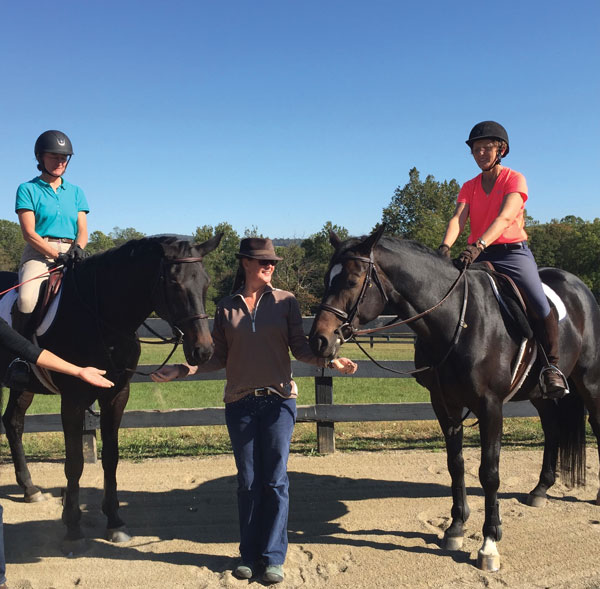
When the performance of one of her horses began to slip, rider and trainer Sue Lyman called in an equine animal communicator Laura Rowley of Ocala, Fla., to help her determine the cause of the decline.
During a telephone call, Rowley asked Lyman for a description of the horse, and for the questions the trainer wanted to ask him. Then Rowley used a technique called remote viewing (RV) to “ask” the horse why his performance had declined.
“It turned out that the horse had Lyme disease, which was confirmed by a veterinarian,” Lyman recalls. “I’ve been working with Rowley for years now.”
Types of Communicators
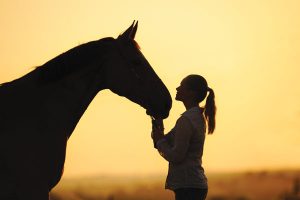
Lyman is just one of a growing number of owners, trainers and riders seeking the help of equine animal communicators to get insight into the condition of their horses, and what they might do to improve it.
“The trainers want to know if they have pushed the animal too hard; owners and riders want to know if the horse is in pain from improperly fitting equipment or because the rider is unbalanced,” Rowley says. “About 99 percent of my work is done remotely, and 80 percent of my clients are referred from other people.”
The use of interspecies communicators’ services has been quietly—and often controversially—on the rise for the past 20 years, according to Mary Ann Simonds of Wellington, Fla., owner of HeartMind SPEAK, director of the Whole Horse and Equestrian Institute, and teacher of RV techniques to students worldwide. That’s generally because most communicators never touch the horses they read. Instead, they use RV to obtain impressions about a horse that is located miles away in order to “sense” the animal’s condition with their minds.
“There are basically two main types of interspecies communicators: professional scientists with degrees in cognitive ethology; consciousness or cognitive psychology; parapsychology; and animal awareness,” plus training in RV and animal communication, Simonds explains. “And there are those who interpret the animal’s emotional state of being, who often work in conducting body scans and general energy reading of the animal’s overall condition.”
How It Works
Horses respond by showing equine animal communicators what they are experiencing.
“First I ask the horse’s permission, then I ask them a lot of questions,” Rowley explains. “In response, horses show me pictures; some show me words.”
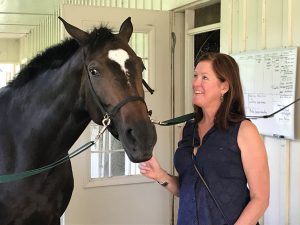
Despite its increasing use, detractors— including the majority of veterinarians— have long dismissed RV as a pseudoscience: scientifically unfounded and impossible to prove.
“We’ve come a long way in recognizing pain in horses,” says Katherine Houpt, VMD, Ph.D., professor emeritus in the Department of Clinical Sciences Section of Behavioral Medicine at the Cornell University of Veterinary Medicine. “This is not about finding out whether your horse wants more apples than carrots; I don’t think veterinarians will ever embrace the use of animal communicators.”
Horse owner Mary McEwan hopes that is not the case.
When her then 3-year-old Arabian gelding Einstein began moving unevenly, McEwan called in communicator Katherine George.
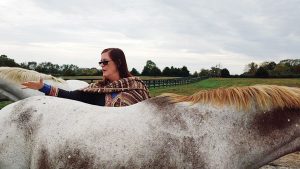
“Kathy just reviewed his body and found [the problem] was his right shoulder,” she recalls. “That is when she got specific about the pain being at 10 o’clock, ‘If you look at his shoulder as a clock.’”
A subsequent chiropractic treatment by a veterinarian revealed that the pain-causing misalignment was exactly where Einstein told George it was, McEwan says. Now, she calls on George whenever she has a question about Einstein’s wellbeing.
“I tell [George] what I want to know, and [Einstein] tells me what he wants me to know,” says McEwan.
Popularity and Cost
Despite her positive experiences, McEwan understands why the services of equine animal communicators are not more universally sought, and why many veterinarians are reluctant to recognize them.
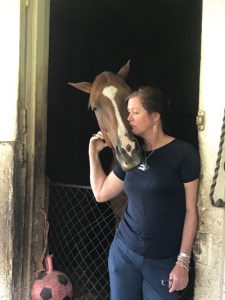
“There are a lot of charlatans out there,” McEwan says. “It’s hard to find someone who is honest.”
Even so, George believes that horse owners and others will increasingly consult with communicators because they represent a new tool in an overall wellness plan.
“Farriers, veterinarians, owners—even the people you board your horse with—all have information, like pieces of a puzzle,” George points out. “When you put all the pieces together, you can understand the horse better so he can have a better life.”
Rowley agrees. As the overall cost of horse care escalates, and as the cost of veterinary care in particular rises, she believes that communicators will play an increasing role in good horsekeeping.
That’s because horse owners can generally expect to pay $50 or more for a veterinarian to make a farm visit. After that, the cost of diagnostics and a full examination can add another $100 or significantly more to the bill.
By contrast, interspecies communicators’ fees range from $45 for 15 minutes to as much as $175 for a 60-minute session. The lower price can mean the difference between a horse receiving appropriate care or having care postponed due to the price tag, she says.
Not in Competition
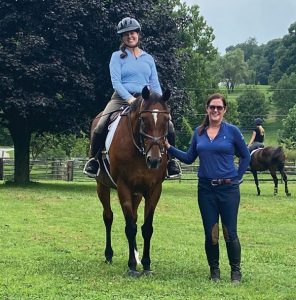
“The cost of owning a horse is very high, and if owners or trainers can determine the location and cause of the pain or change in behavior, it reduces the amount of diagnostics a veterinarian has to do,” Rowley points out. “Animal communicators don’t want to have a competitive relationship with veterinarians— we want to help owners and trainers do what’s best for the horse.”
That’s why Rowley hopes that when it comes to improving a horse’s quality of life, the use of animal communication techniques will be as commonplace among horse owners and trainers as equine chiropractic, acupuncture and massage techniques have become.
“Animal communicators want to help people become more intuitive in the way they train and ride, and in their overall relationships with their horses,” says Rowley. “And animals respond to being asked. They want to communicate; they want to feel understood; they want to be heard. Ultimately, it’s a welfare issue.”
This article about equine animal communicators appeared in the March 2021 issue of Horse Illustrated magazine. Click here to subscribe!
Before You Hire a CommunicatorWhether an owner wants to learn about a horse’s physical condition or Perusing holistic animal health directories that list animal ◆ Have a Goal: Owners should be very clear about what information “There are specialists who work with various animals, such as dogs, ◆ Get Referrals: Talk with others—including veterinarians—who “Referrals are also the best way for an owner to understand their own ◆ Ask Lots of Questions: Interview a prospective communicator to “A good animal communicator specialist will go over the [consultation] process with you and let you know whether they might be able to ◆ Be Realistic: Owners should understand that working with an interspecies communicator may not reveal all the information that they expect. “Also, remember the information is not black and white,” Simonds says. 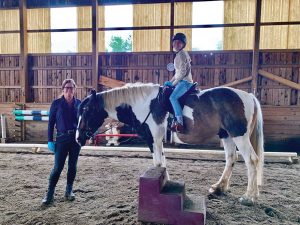 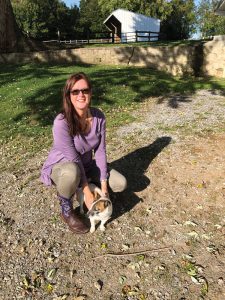
|




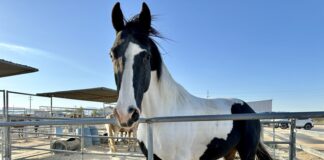

At the moment there only seems to be anecdotal evidence for telepathic animal communication, but when there is so much of it surely it needs to be taken seriously? Of course it is by many people and like your article says, it can be combined with veterinary care for a more holist approach to equine care.